Martin Rooney is a long-time friend, co- Exercise Science major, and fellow athlete at Furman University. He was on the track team as a Javelin thrower and I played football. Neither of us have been able to get competing athletically out of our life. When Martin realized he wasn’t going to make it to the Olympics in the Javelin, he switched gears and nearly made the US bob-sled team. I am still waiting to be drafted by an NFL franchise and but until that happens I have been competing in Master’s Weightlifting.
Martin began his career as one of the founders of the Parisi Speed School. He trained many athletes including several for the NFL combine. He now owns a fitness business called Training for Warriors and continues to train several elite athletes, including Jim Miller a veteran UFC fighter.
A few years ago, I went to visit my old friend to learn from him, trade ideas in training athletes, and I happened to arrive just in time to train with Jim Miller. Don’t be scared for my life. I wasn’t training with him in the octagon but in a fitness training session. It was intense!
Recently, Jim became the first fighter with 30 wins in his UFC weight class. My friend Martin Rooney interviewed Jim to glean from him 8 Lessons from the Octagon.
1. Always Be Training
One of Jim’s secrets was never having an “off-season.” As a result of the commitment to train, he stayed healthy and injury-free. This preparation developed the best ability you can have: Availability.
Action Item: If you are not competing in what it is you do, then you should be training. Tell yourself there is no “off-season.” This week make a commitment to consistent training so you are available when your time comes.
2. Say “Yes” To Opportunity
Jim got his first fight in the UFC because another fighter got hurt and dropped out. Other fighters were given the chance to step in before him but weren’t ready. Jim said “yes” and won! After that fight he still didn’t get a contract and had to have the same thing happen again to finally get signed.
Action Item: You will experience a constant supply of good opportunities. It is not if you can recognize them, but if you can say “yes” when most other people say “no.” This week challenge yourself to say “yes” to an opportunity that has been waiting for you.
3. Develop Your Process
Jim had to both develop and then believe in the system of training, nutrition and skill work he would need to succeed in the UFC. This took not only years of homework, but also years of hard work too.
Action Item: There is a system of strategies for anything you want to achieve. Do your research, develop your system, and the confidence to carry it out. This week identify someone who has done what you want to do and learn how they did it.
4. Win Your Inner Battle
Jim, like any other fighter, has experienced anxiety, stress, and self doubt. Before he could ever defeat anyone inside the Octagon, he first had to defeat himself. The real battle was outside of the cage.
Action Item: Before you step into the arena, you too have to do battle with your doubts, fears and limitations. Make a list of your current doubts and then your plan to eliminate them. Overcome those obstacles and the other battles will take care of themselves.
5. Focus On The Task At Hand
Jim said that his was one of the most important secrets of both competing and preparation. The key was to be present in the moment and live not just fight to fight, but also moment to moment.
Action Item: Although that may sound easy for a 15 minute fight, being present takes practice. Remind yourself each day this week of your priorities and make sure you are taking care of what is most important right now.
6. Learn From Loss
After 30 fights, Jim feels the biggest lessons came from the defeats, not the victories. Although you can learn from both, it is important to learn what the defeat was trying to instruct.
Action Item: Like a fighter, things are not always going to go your way. There will be ups and downs. The key is to to be ready to learn from both. Write down some of your biggest lessons from your latest challenges.
7. Give Your Best Effort
Having won many UFC “Fight of the Night” and also a “Fight of the Year” honors, Jim is known as a fighter that gave his all in every fight. This skill was definitely one of the reasons he has been given more fights than any other fighter in UFC history.
Action Item: Win or lose, you will never regret giving your best effort. If you go all out in what you do, I promise you and everyone else will be ok with the result. Make your best effort today in something.
8. Commit To Evolve
If Jim hadn’t continued to improve and update his training, nutrition and skills, he would not have been able to stay competitive over the last decade. His feels his open mind might be a bigger weapon than his hands or feet.
Action Item: You must continue to evolve or go extinct. You have to adapt or run the risk of getting weeded out. Do an inventory of the skills you need to succeed in your career and make sure you are staying up to date.
Live life like a UFC fighter!!!















